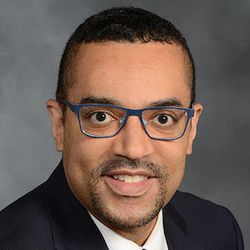Atopic Dermatitis: The Patient Journey - Episode 6
The Effect of Atopic Dermatitis on Pediatric and Adult Patients
Elizabeth A. Swanson, MD, describes the burden of atopic dermatitis on the pediatric and adult patient populations.
Raj J. Chovatiya, MD, PhD: I want to throw it over to Elizabeth for a moment. Can you tell us about some of the differences between atopic dermatitis in children and adults, and how that might affect some of the impacts there?
Elizabeth A. Swanson, MD: Yes. I’d be happy to. Atopic dermatitis is miserable, regardless of your age, but the type of misery you experience might be a bit different. In childhood, you’re trying to enjoy yourself, go to sleepovers, play sports, and the atopic dermatitis can get in the way of that. You’re also trying to form some sense of self-esteem and the atopic dermatitis can get in the way of that. Then, when you’re a family with a child with atopic dermatitis, the entire family experiences the disorder. It’s a trickle-down symptomatology. If the child with atopic dermatitis isn’t sleeping, neither is the parents or the siblings, and the effects of it can trickle down to the other members of the family. Being an adult with atopic dermatitis, there can be a sense of hopelessness because it has persisted for so long. You’re stuck with it for so long. People may have told you that you would outgrow it and it would be no big deal. And you’re like, “Why didn’t I outgrow it? Why am I still dealing with this?” It can affect interpersonal relationships as you get out in the world and try to make friends and meet people. It can interfere with social activities, things like you’re just trying to live your best life and it gets in the way. There’s this expression that you can boil to death in a slowly heating bathtub, and atopic dermatitis, for a lot of patients and their families, is that slowly heating bathtub. Where sometimes you don’t even realize the impact that it’s having until potentially you go on a medicine that helps you, like Taylor finally did, and life was good again. I like the expression that Korey used of the narrowing of horizons. That happens as a result of this slowly heating bathtub and until you go on something that helps you with it, you don’t realize just how narrow your horizons have become.
Raj J. Chovatiya, MD, PhD: That encapsulates it well. I want to get to Korey for a moment. I mentioned something, Elizabeth did as well, and I’d love to get your perspective of this idea of outgrowing eczema. This historical element that’s stuck around, even though in the medical community, the advocacy, patients, we know that this is not the case a lot of times.
Korey Capozza, MPH: I appreciate it that you brought that up because it’s a problem. It’s a problem for kids and families because they’re not getting treated because of it. There’s this perception, especially in the primary care provider community, that persists that this will happen, and so we don’t treat these kids aggressively. It’s like, we’ll wait it out a few more years. You’ll grow out of it. With these ones that are suffering with moderate to severe, it’s not fair. They’re suffering and they deserve to be treated. We need to dispel that myth. It’s important. The other thing is that, I will tell you that I clung to that like a life raft growing up. When my son was growing up, I desperately wanted him to grow out of it. Every year I felt like, will this be the year that he grows out of it? Please let it be the year. When he didn’t, it was crushing. It’s damaging in 2 ways. One, the children aren’t getting the treatment that they need because there’s a perception that if you do nothing, eventually it will go away. And then 2, it’s held out there as a hope for people and it’s hard when that doesn’t happen. And it also, prevents parents from treating the condition more aggressively because you think that it might be you this year, that you grow out of it. I don’t know if that resonates with anyone else, but it’s important to start to look at that data about who does grow out of it and start to understand more about the variability in the patient population. Who might and who might not grow out, so we can treat these children better.
Raj J. Chovatiya, MD, PhD: That’s a great point.
Transcript Edited for Clarity



